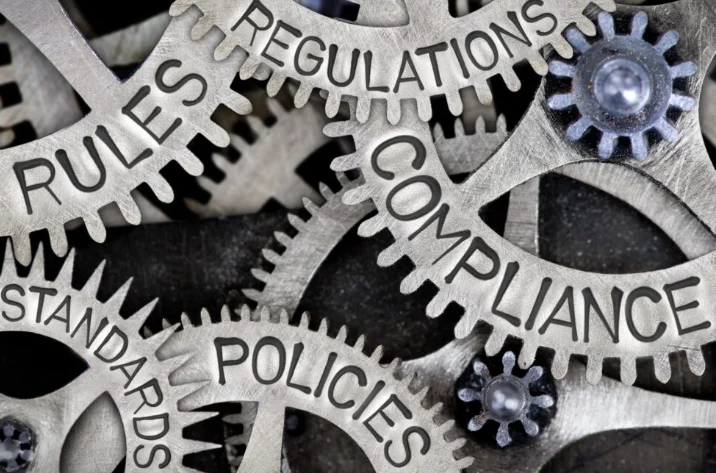The European Union (EU) is known for its stringent regulatory frameworks that are designed to maintain high standards of safety, quality, and compliance across its member states. One of the key mechanisms the EU employs to enforce these regulations is the inspection process. EU inspections are conducted in various sectors, from food and pharmaceuticals to environmental protection and financial services, to ensure that businesses and organizations comply with EU laws and standards. This article delves into the importance, process, and impact of EU inspections.
The Importance of EU Inspections
Ensuring Public Safety and Consumer Protection
One of the primary objectives of EU inspections is to safeguard public health and safety. This is particularly crucial in industries like food production, pharmaceuticals, and chemicals, where non-compliance can have serious consequences for consumers. EU inspections help to ensure that products reaching the market meet the necessary safety standards, thereby protecting consumers from potential harm.
Maintaining High Standards Across Member States
The EU is a diverse political and economic union comprising 27 member states, each with its own regulatory frameworks. EU inspections are essential in harmonizing these regulations, ensuring that all member states adhere to the same high standards. This not only creates a level playing field for businesses operating within the EU but also ensures that products and services are safe, high-quality, and trustworthy, regardless of where they are produced or sold within the EU.
Facilitating International Trade
Compliance with EU regulations is often a prerequisite for businesses seeking to trade within the EU or with EU member states. By conducting regular inspections, the EU ensures that businesses outside the union also meet its high standards, thereby facilitating international trade. This is particularly important in sectors like food and agriculture, where strict EU standards are recognized globally, enhancing the reputation of EU products.
The EU Inspection Process
Planning and Preparation
EU inspections are typically planned and announced in advance, although unannounced inspections may occur in certain circumstances, especially in industries where there is a high risk of non-compliance. The planning phase involves identifying the entities to be inspected, defining the scope of the inspection, and determining the criteria against which compliance will be assessed.
Conducting the Inspection
During the inspection, EU inspectors visit the premises of the business or organization in question to assess compliance with relevant EU regulations. This may involve reviewing documentation, examining products, interviewing staff, and observing processes. The inspectors are usually experts in the field they are assessing and are trained to identify potential areas of non-compliance.
Reporting and Follow-Up
After the inspection, the inspectors compile a report detailing their findings. If non-compliance is detected, the report will include recommendations for corrective actions. In cases of serious non-compliance, the business may face penalties, including fines, suspension of operations, or even legal action. Follow-up inspections may be conducted to ensure that the necessary corrective actions have been implemented.
Key Sectors Subject to EU Inspections
Food and Agriculture
The food and agriculture sector is one of the most heavily regulated in the EU, with inspections focusing on food safety, labeling, and animal welfare. These inspections ensure that food products are safe for consumption and that they meet the EU’s high standards for quality and sustainability. This is particularly important given the EU’s role as one of the world’s largest exporters of agricultural products.
Pharmaceuticals and Medical Devices
Pharmaceuticals and medical devices are subject to rigorous EU inspections to ensure that they are safe, effective, and of high quality. Inspections in this sector are critical, as any lapse in standards can have severe implications for public health. The EU’s inspection process in this sector is recognized as one of the most stringent in the world, which helps maintain the high level of trust in medicines and medical devices produced in the EU.
Environmental Protection
The EU has some of the most advanced environmental regulations globally, aimed at reducing pollution, conserving biodiversity, and promoting sustainable development. Inspections in this sector focus on ensuring that businesses comply with environmental laws, such as waste management, emissions controls, and water quality standards. These inspections are vital for protecting the environment and ensuring that businesses contribute to the EU’s sustainability goals.
Financial Services
The financial sector is another area where EU inspections play a crucial role. Inspections are conducted to ensure that financial institutions comply with regulations designed to maintain the stability of the financial system, protect consumers, and prevent financial crimes such as money laundering and fraud. Given the global nature of financial markets, these inspections also help maintain the EU’s reputation as a stable and transparent financial hub.
Challenges and Criticisms of EU Inspections
Balancing Rigor with Fairness
One of the challenges of the EU inspection process is balancing the need for rigorous enforcement of regulations with the need to be fair and reasonable to businesses. Some businesses, particularly small and medium-sized enterprises (SMEs), may find the compliance requirements and inspection process burdensome. The EU has made efforts to streamline the inspection process and reduce the regulatory burden on SMEs, but this remains a point of contention.
Addressing Cross-Border Compliance
Given the EU’s diverse membership, ensuring consistent compliance across all member states can be challenging. Variations in local implementation of EU laws can lead to discrepancies in how inspections are conducted and how standards are enforced. The EU continues to work towards greater harmonization of inspection processes across member states, but achieving uniformity remains an ongoing challenge.
The Future of EU Inspections
Embracing Technology
The future of EU inspections is likely to be shaped by advances in technology. Digital tools, such as data analytics and remote monitoring, are expected to play a larger role in the inspection process, making it more efficient and effective. These technologies can help inspectors identify potential areas of non-compliance more quickly and accurately, reducing the need for on-site inspections and minimizing disruption to businesses.
Focus on Sustainability
As the EU continues to prioritize sustainability, inspections are likely to focus more on environmental and social compliance. Businesses will need to demonstrate that they are not only meeting regulatory requirements but also contributing to the EU’s broader sustainability goals. This could involve more frequent and stringent inspections in areas such as carbon emissions, waste management, and supply chain transparency.
Conclusion
EU inspections are a vital tool for ensuring compliance with the union’s regulations, safeguarding public health and safety, and maintaining high standards across member states. While the inspection process can be challenging for businesses, particularly SMEs, it is essential for maintaining the integrity of the EU market and protecting consumers. As the EU continues to evolve, so too will its inspection processes, with a greater emphasis on technology and sustainability. For businesses operating within the EU, staying informed and prepared for inspections is crucial for ongoing compliance and success in this highly regulated environment.

Ruby Stauffer is a prominent technology blogger known for her insightful analysis and in-depth reviews of the latest tech trends and gadgets. Her blog has become a go-to resource for tech enthusiasts seeking reliable information and expert opinions on the ever-evolving world of technology.

